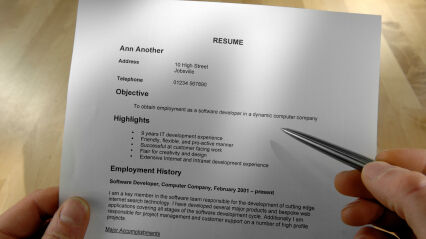A Comprehensive Guide to Writing a Resume

Crafting an effective resume is essential for showcasing your skills, experience, and qualifications to potential employers. Whether you’re a recent graduate entering the job market or a seasoned professional looking to advance your career, a well-written resume can make a significant difference in landing interviews. This comprehensive guide will take you through each step of creating a compelling resume that highlights your strengths and impresses hiring managers.
1. Understand the Purpose of a Resume
A resume serves as a marketing tool to communicate your professional background, skills, and achievements to potential employers. Its primary goal is to secure an interview by demonstrating why you’re a strong candidate for the job.
2. Choose the Right Resume Format
There are several common resume formats to choose from:
- Reverse chronological: Lists your work experience in reverse chronological order, starting with the most recent job.
- Functional: Focuses on skills and abilities rather than chronological work history, useful for career changers or those with employment gaps.
- Combination: Combines elements of both chronological and functional formats, emphasizing skills and relevant experience.
Select a format that best showcases your strengths and aligns with the job you’re applying for.
3. Gather Your Information
Before you start writing, gather all relevant information:
- Contact information (name, phone number, email, LinkedIn profile)
- Professional summary or objective statement (optional but recommended)
- Work experience (job titles, companies, dates of employment, responsibilities, achievements)
- Education (degrees, certifications, institutions, graduation dates)
- Skills (technical skills, soft skills, language proficiency)
- Awards, honors, and recognitions
- Professional memberships or affiliations
- Volunteer work or community involvement (if applicable)
4. Organize Your Resume Sections
Structure your resume into clear sections to make it easy for recruiters to navigate:
- Header: Include your name and contact information (phone number, email address, LinkedIn profile).
- Professional Summary or Objective: A brief statement highlighting your career goals, key skills, and what you bring to the table.
- Work Experience: List your jobs in reverse chronological order, emphasizing accomplishments and responsibilities relevant to the job you’re applying for.
- Education: Include degrees, certifications, and relevant coursework.
- Skills: Highlight relevant technical skills, software proficiency, and soft skills.
- Additional Sections: Include sections like awards, certifications, professional affiliations, or volunteer experience, depending on relevance.
5. Write Compelling Content
Each section of your resume should be concise yet informative:
- Professional Summary or Objective: Craft a compelling introduction that summarizes your career goals and key qualifications. Tailor it to each job application to highlight relevant skills and experiences.
- Work Experience: For each job, include the company name, job title, dates of employment, and bulleted list of responsibilities and achievements. Use action verbs and quantify your accomplishments (e.g., “increased sales by 20%”).
- Education: List your degrees, certifications, and relevant coursework or academic achievements.
- Skills: Include both technical skills (e.g., programming languages) and soft skills (e.g., communication, teamwork).
- Additional Sections: Showcase any relevant awards, certifications, or professional affiliations that strengthen your candidacy.
6. Use Clear and Professional Language
Keep your language clear, concise, and professional throughout your resume. Avoid jargon or overly complex language that may confuse or distract recruiters.
7. Format and Design
Ensure your resume is visually appealing and easy to read:
- Choose a clean and professional font (e.g., Arial, Calibri, Times New Roman).
- Use bullet points for clarity and readability.
- Maintain consistent formatting (e.g., bold headers, consistent spacing).
- Keep your resume to one or two pages, depending on your level of experience.
8. Proofread and Edit
Review your resume for grammar, spelling, and punctuation errors:
- Use spell check and grammar tools to catch mistakes.
- Have a trusted friend or mentor review your resume for feedback.
- Tailor your resume for each job application by emphasizing relevant skills and experiences.
9. Tailor Your Resume for Each Job Application
Customize your resume for each job by aligning your skills and experiences with the job description:
- Highlight key qualifications and achievements that match the job requirements.
- Use keywords from the job listing to optimize your resume for Applicant Tracking Systems (ATS).
10. Save and Send Your Resume
Save your resume as a PDF or Word document with a professional file name (e.g., “Firstname_Lastname_Resume.pdf”):
- When sending your resume via email or online application systems, follow the employer’s instructions regarding file format and naming conventions.
- Include a brief and professional email message or cover letter introducing yourself and attaching your resume.
Conclusion
Writing a resume is a skill that improves with practice and attention to detail. By following these steps and guidelines, you can create a compelling resume that effectively showcases your qualifications and impresses potential employers. Remember to tailor each resume to the specific job you’re applying for and regularly update it as you gain new skills and experiences. A well-crafted resume is your ticket to securing interviews and advancing your career goals in today’s competitive job market.







